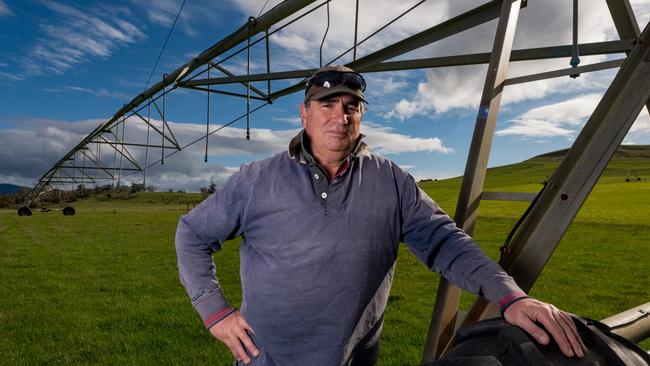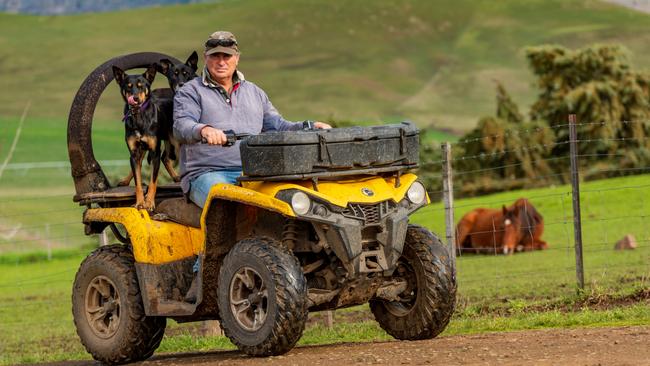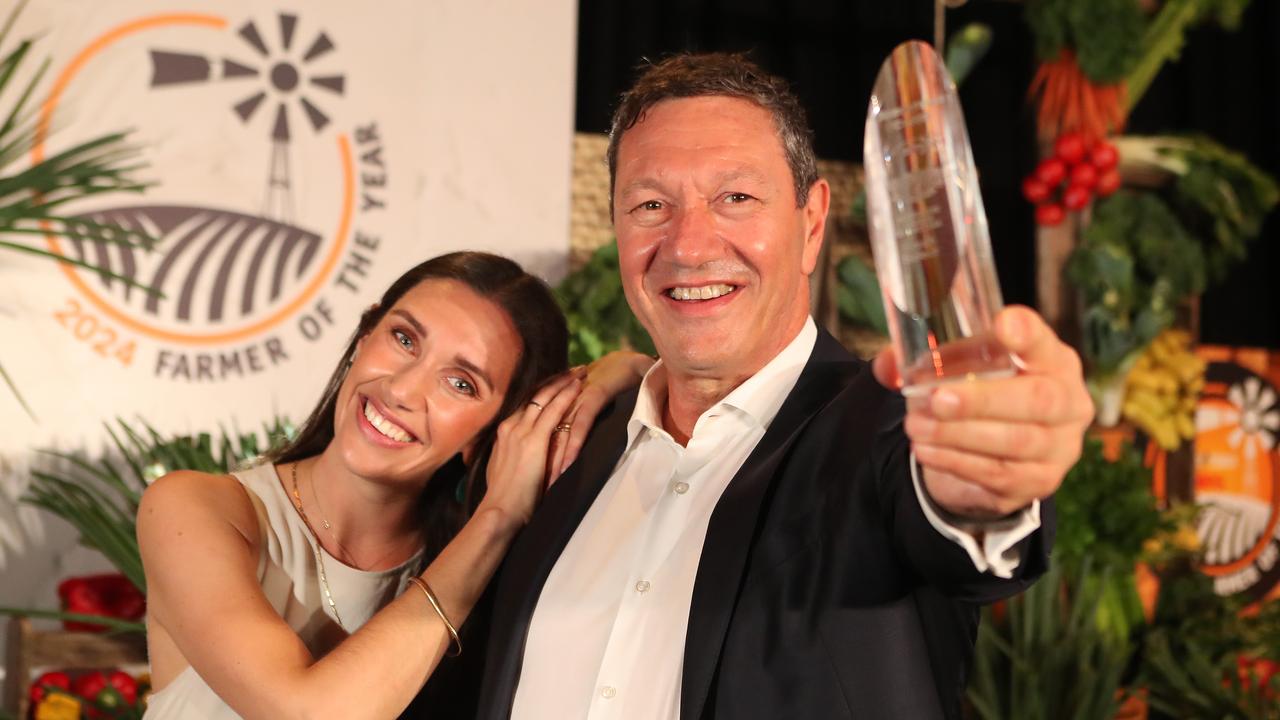Lyndall Farm: Tassie lamb bred for flavour and profits
The excellent eating quality of their end product has set the Shea family and their Hamilton sheep operation up for success.

The Weekly Times Coles 2021 Farmer of the Year awards celebrates the best producers from across Australia. If you know a farmer who is doing great things and deserves to be recognised, nominate them here.
One Tasmanian couple knew their lamb was good – but now it is officially delicious.
The lamb enterprise run by George Shea and his wife, Galina, near Hamilton in central Tasmania, was a gold medallist in the 2021 delicious Harvey Norman Produce awards.
While humbled with the national recognition, George is thrilled that the efforts to produce lamb with excellent eating quality have paid off.
The couple spent years working on the mainland before returning to buy the 280-hectare Lyndall Farm to establish a grazing operation. They were determined to buy in the tightly held Hamilton district, so much so they approached a contact to see if he would sell land that wasn’t even on the market. “This is an area where there is secure irrigation water, which meant we could consistently turn off stock regardless of the season,” George says.
“Without irrigation, this land area would not be viable.”
What turns the smaller area into a profitable one is the four fixed centre pivots, which can collectively water 140 hectares. Under these, George runs a lucerne-dominated pasture, with rye-grass and fescue sown in to improve diversity of the pasture sward and produce more feed bulk in spring.
It took a few years to get the pastures up and running, and the development program saw poppies, oats and finishing cattle thrown into the mix to create cash flow.
As George looked to find a more profitable grazing enterprise, he switched to lamb, working with the Lambpro seedstock enterprise at Holbrook in NSW to establish a flock of composite ewes.
A mix of mature ewes and ewe lambs is joined, with 1100 lambing down each year and 1700 lambs marked from the joining. Ewe lambs are joined at an average body weight of 50-55kg at an average age of 10 months, have scanning rates of 120 per cent and weaning rates of about 90 per cent. The overall lambing percentage comes out at more than 150 per cent across both ewe lambs and mature ewes.

FOCUS ON EATING
Lambing is split between July and August to spread peak feed demand, and extend the potential delivery window when it’s time to turn lambs off.
While production and fertility are important, eating quality is where George has a razor-sharp focus. He knows that as lamb becomes more expensive and more of a luxury than everyday item, eating quality must be paramount. “People will not pay big money for lamb if they are not assured of its eating quality,” George says. “Thanks to the use of genetics, we have been able to turn off lamb with high marbling (intramuscular fat) off grass.”
Rams are selected with estimated breeding values that are high for intramuscular fat, maternal traits and shear force tenderness.
The resulting progeny are tailored to fit into the Sheas’ supply chain.
George and Galina have established a business relationship with Tasmanian butcher shop Meat Mistress. Not only does the store stock the lamb in its display cases but it also then acts as a wholesaler to top-end restaurants in Hobart. There are other loyal customers, such as the Agrarian Kitchen in New Norfolk, which buys lambs to offer a nose-to-tail experience for their patrons, showing them how to break down a carcass and use all portions. While the initial desire of his customers was to buy a typical domestic carcass of 18-21kg, there has been a gradual shift to a bigger carcass size with 24-25kg the preferred option now for many of the Lyndall Farm sales.
“The perception was that they wanted the smaller domestic lambs, but we were able to show that the best eating lamb was not in that weight range,” George says. “The marbling in the lambs does not come to the fore until they are 24-25kg carcass weight, and we could supply that weight of lambs 52 weeks of the year.
“It was interesting how quickly the customers and chefs came around to understanding this.”

SETTING GOALS
The lambs are processed through a small, local abattoir. Order requests are sent by text, the lambs are taken to the abattoir on a Monday, processed on a Tuesday and to the customer by Wednesday or Thursday that week.
The flow of lambs is most challenging in winter. Cold weather slows growth rates and the grass-fed nature of the production system and the marketing around this means supplements have to be chosen carefully.
The Sheas feed lucerne haylage to cover this period. “The sheep like the haylage, which is drier like hay but has that fermented smell (like silage) that attracts the stock, and the haylage is also higher feed quality than hay,” George says.
While feeding the right pastures to finish the lambs is important, George says the basis has to be good genetics.
“When producing lamb, 70 per cent of the end product comes from genetics and 30 per cent from feeding and handling,” he says.
It is an “exciting time to be in the sheep space”, George says, with Meat Standards Australia soon to be applied to the lamb industry to guarantee eating quality.
The Sheas’ goal is to be able to market all 1700 of their lambs through their supply chain, selling as few as possible as a commodity. And they are already preparing in case demand spikes and the customer base swells to requiring up to 100 lambs a week.
MORE


